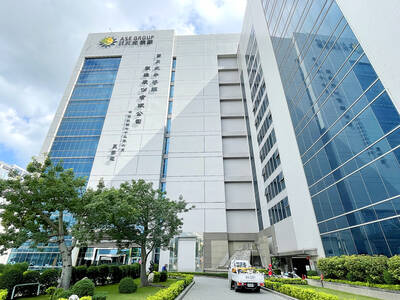China has begun laying a fiber optic cable worth US$500 million to the US that will be vital in meeting booming Internet traffic between the two nations, state press reported yesterday.
The "Trans Pacific Express" cable will directly link China with South Korea, Taiwan and the US, greatly increasing Internet speeds between the regions, the China Daily reported.
Work laying the cable began in the coastal city of Qingdao on Monday, with completion of the trans-oceanic line scheduled for next July, the paper said.
The terminus of the cable, which will also be able to transmit high definition television signals during the Beijing Olympics, will be in Nedonna Beach, Oregon, it said.
Current US-Chinese cable links run through Japan, but Beijing sees Tokyo as a regional rival and has long wanted an independent connection to the US.
The new cable is expected to help avoid breakdowns in trans-oceanic Internet traffic similar to what occurred following a 7.1-magnitude earthquake that struck the seabed near Taiwan on Dec. 26, snapping undersea telecom cables.
The quake caused major communications disruptions in Taiwan, China, Hong Kong, Japan, Singapore and elsewhere.
Investors in the new cable include US telecom giant Verizon Communications Inc, Chinese companies China Telecom Ltd (中國電信), China Netcom Ltd (中國網通) and China Unicom Ltd (中國聯通), as well as Korea Telecom Corp and Chunghwa Telecom Co (中華電信), reports said.
The cable is to have connections to South Korea and Taiwan but none to Japan, according to its developers.

EXPANSION: The investment came as ASE in July told investors it would accelerate capacity growth to mitigate supply issues, and would boost spending by 16 percent ASE Technology Holding Co (ASE, 日月光投控), the world’s biggest chip assembly and testing service provider, yesterday said it is investing NT$17.6 billion (US$578.6 million) to build a new advanced chip packaging facility in Kaohsiung to cope with fast-growing demand from artificial intelligence (AI), high-performance-computing (HPC) and automotive applications. The new fab, called K18B, is to commence operation in the first quarter of 2028, offering chip-on-wafer-on-substrate (CoWoS) chip packaging and final testing services, ASE said in a statement. The fab is to create 2,000 new jobs upon its completion, ASE said. A wide spectrum of system-level chip packaging technologies would be available at

Taiwan’s foreign exchange reserves hit a record high at the end of last month, surpassing the US$600 billion mark for the first time, the central bank said yesterday. Last month, the country’s foreign exchange reserves rose US$5.51 billion from a month earlier to reach US$602.94 billion due to an increase in returns from the central bank’s portfolio management, the movement of other foreign currencies in the portfolio against the US dollar and the bank’s efforts to smooth the volatility of the New Taiwan dollar. Department of Foreign Exchange Director-General Eugene Tsai (蔡炯民)said a rate cut cycle launched by the US Federal Reserve

HEAVYWEIGHT: The TAIEX ended up 382.67 points, with about 280 of those points contributed by TSMC shares alone, which rose 2.56 percent to close at NT$1,400 Shares in Taiwan broke records at the end of yesterday’s session after contract chipmaker Taiwan Semiconductor Manufacturing Co (TSMC, 台積電) hit a fresh closing-high amid enthusiasm toward artificial intelligence (AI) development, dealers said. The TAIEX ended up 382.67 points, or 1.45 percent, at the day’s high of 26,761.06. Turnover totaled NT$463.09 billion (US$15.22 billion). “The local main board has repeatedly hit new closing highs in the past few sessions as investors continued to embrace high hopes about AI applications, taking cues from a strong showing in shares of US-based AI chip designer Nvidia Corp,” Hua Nan Securities Co (華南永昌證券) analyst Kevin Su

Nvidia Corp’s major server production partner Hon Hai Precision Industry Co (鴻海精密) reported 10.99 percent year-on-year growth in quarterly sales, signaling healthy demand for artificial intelligence (AI) infrastructure. Revenue totaled NT$2.06 trillion (US$67.72 billion) in the last quarter, in line with analysts’ projections, a company statement said. On a quarterly basis, revenue was up 14.47 percent. Hon Hai’s businesses cover four primary product segments: cloud and networking, smart consumer electronics, computing, and components and other products. Last quarter, “cloud and networking products delivered strong growth, components and other products demonstrated significant growth, while smart consumer electronics and computing products slightly declined,” compared with the